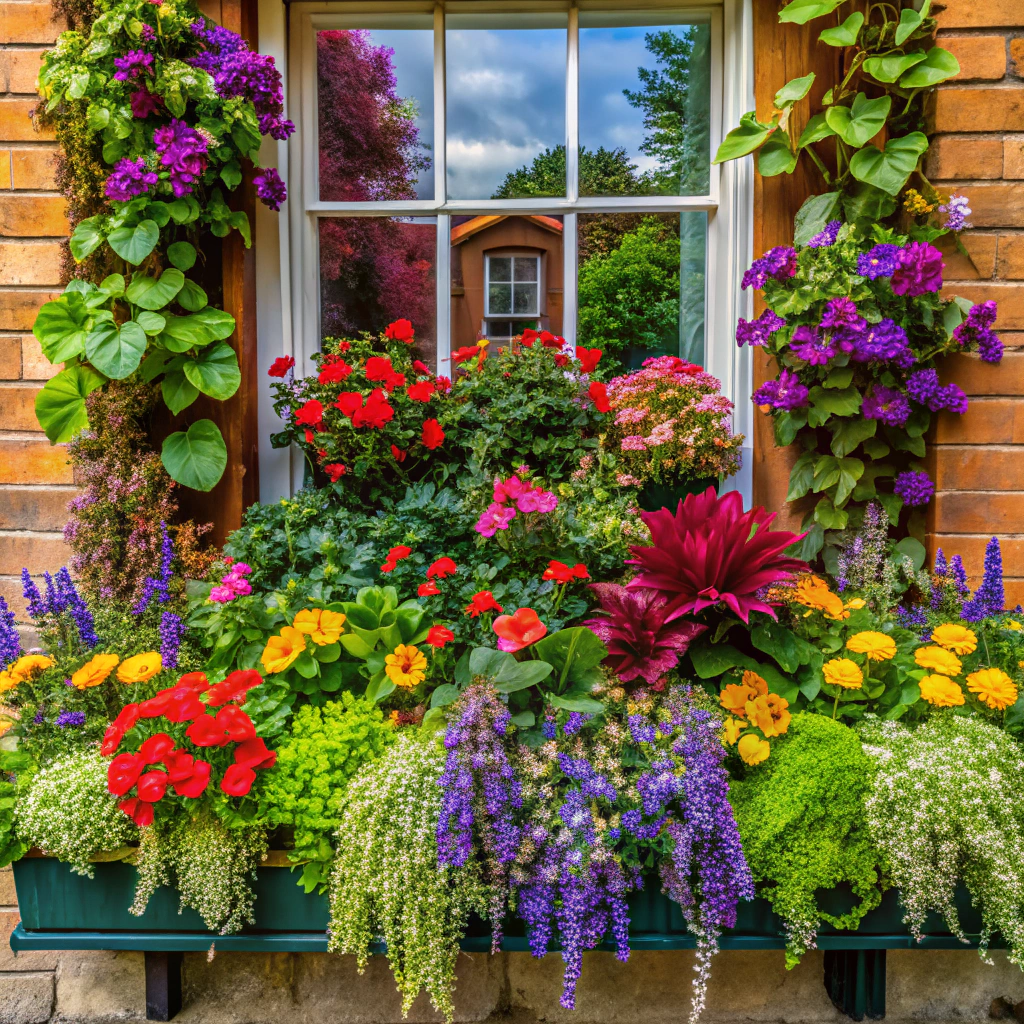Discover the perfect items to place in front of your living room window, transforming it into a stunning focal point that enhances the aesthetics and functionality of your space.
When it comes to decorating your living room, there are a lot of things to consider. From the color scheme to the furniture placement, every detail plays a crucial role in creating the perfect ambiance.
But what about that big window in your living room? It’s an essential feature that can make or break the overall look of your space. So, what should you put in front of it? In this blog post, we’ll explore some creative ideas that will help you enhance the beauty and functionality of your living room window.
Let’s get started!
Key takeaways:
- Window Treatment Options: Curtains, blinds, shades, drapes, shutters.
- Choosing the Right Furniture: Low-profile pieces, complement existing decor.
- Space Utilization Ideas: Storage benches, plant tables, multi-purpose furniture.
- Indoor Plants for Windows: Consider sunlight, size, and shape of plants.
- Energy Efficiency Tips: Install window treatments, use double-paned windows.
Window Treatment Options
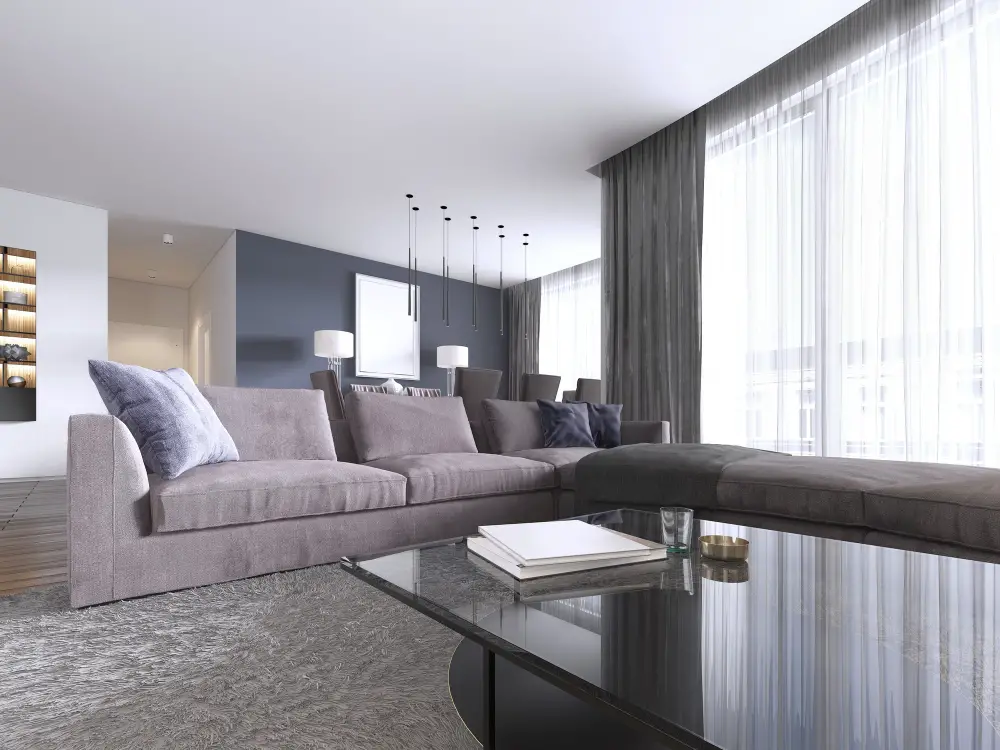
One of the most popular ways to decorate a living room window is by using window treatments. These can add color, texture, and style to your space while also providing privacy and light control.
There are many different types of window treatments available on the market today, including curtains, drapes, blinds, shades or shutters.
Curtains are an excellent choice for those who want a classic look that’s easy to customize with various fabrics and patterns. Drapes offer more formal options with heavier materials that provide better insulation against cold weather conditions.
Blinds come in different styles such as vertical or horizontal slats made from wood or vinyl material which allows you to adjust them according to your preference for natural light control.
Shades have become increasingly popular due their sleek design and energy efficiency features; they come in various styles like Roman Shades which fold up neatly when opened giving you full view outside without any obstruction.
Lastly but not least Shutters give an elegant touch while offering great insulation properties making it perfect for colder climates where heat retention is important.
Choosing the Right Furniture
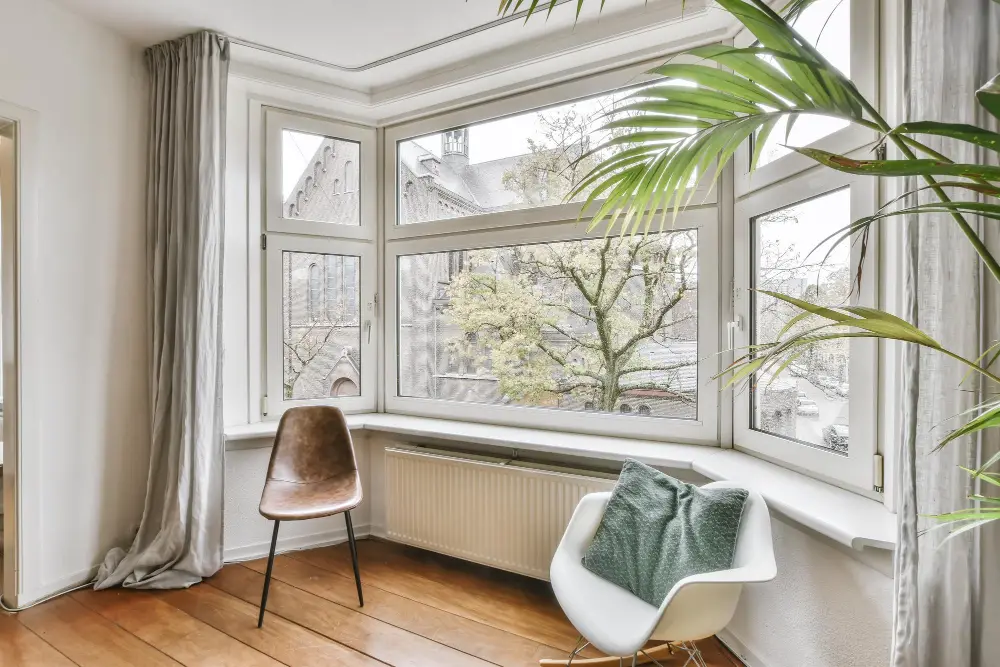
First and foremost, you want to make sure that the furniture doesn’t obstruct the view or natural light coming through your window. This means avoiding bulky pieces that take up too much space or tall items that block out sunlight.
Instead, opt for low-profile pieces like a sofa with clean lines or an armchair with an open back design. A storage bench is also a great option as it can double as seating while providing extra storage space underneath.
Another important factor when selecting furniture is ensuring it complements your existing decor style and color scheme. If you have modern decor in neutral tones, choose sleek and minimalistic designs in shades of black, white or gray; if traditional styles are more your thing then go for classic wooden finishes such as oak or mahogany.
Space Utilization Ideas
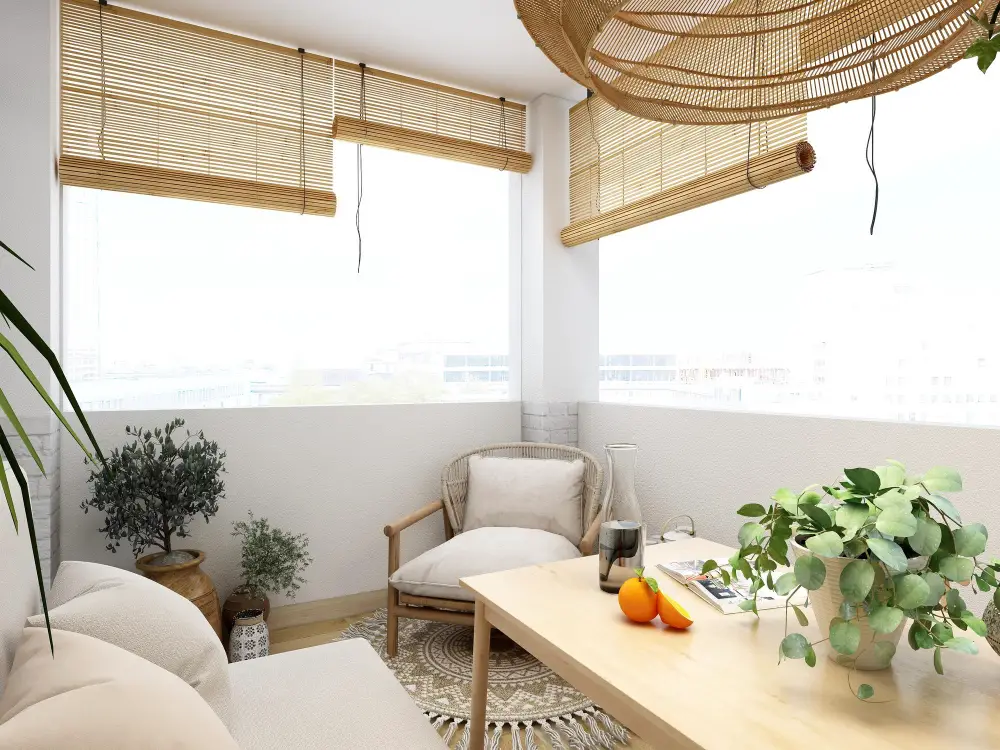
You want to make the most of every inch of your room while still maintaining a functional and comfortable environment. One way to do this is by placing furniture in front of your window that serves multiple purposes.
For example, a storage bench not only provides seating but also offers extra storage for blankets or pillows. A low bookcase can be used as both a display shelf and an additional surface for decor items or books.
Another great option is incorporating plant tables into the design scheme. These small tables are perfect for displaying indoor plants that thrive in natural light from windows while adding some greenery and life into the space.
A Sofa
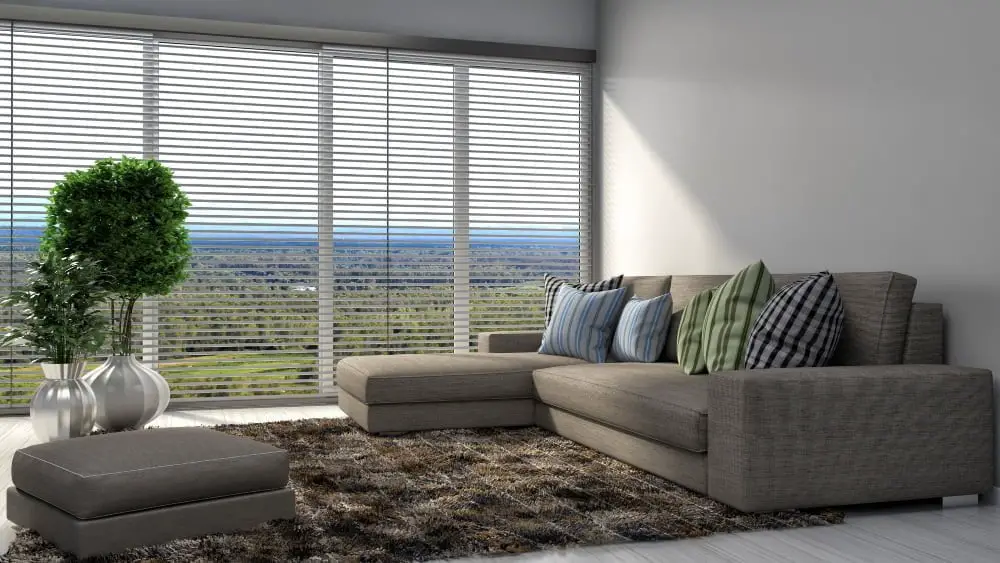
It not only provides comfortable seating but also adds an elegant touch to the space. When choosing a sofa, consider the size and style that best suits your needs and complements the rest of your decor.
If you have a large living room with plenty of natural light, go for a spacious sectional or L-shaped sofa that can accommodate multiple people comfortably. On the other hand, if you have limited space or prefer minimalist design, opt for smaller loveseats or settees.
When it comes to style, there are endless options available – from traditional leather sofas to modern fabric ones with sleek lines and bold colors. Choose one that reflects your personal taste while keeping in mind its functionality as well.
A Window Seat
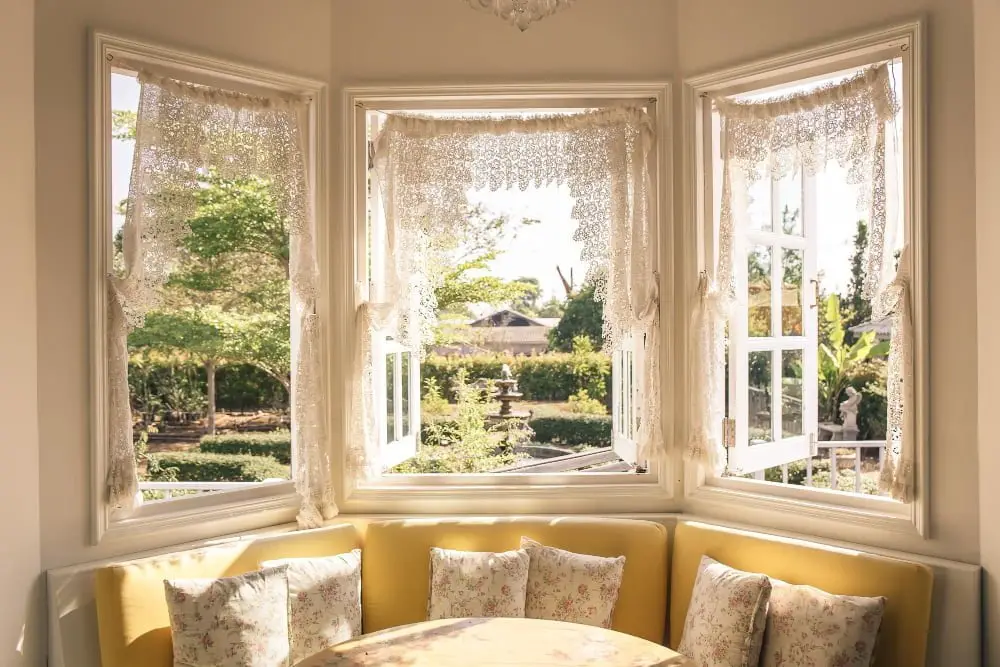
It not only provides a cozy spot for you to relax and enjoy the view, but it also adds extra seating space for your guests. A window seat can be built-in or freestanding, depending on your preference and available space.
If you have a large bay window in your living room, consider building a custom-made bench that fits perfectly into the nook. You can add cushions and throw pillows in different colors and patterns to make it more comfortable and inviting.
On the other hand, if you have limited floor space or prefer something more flexible, opt for a freestanding bench that can be moved around easily. You can choose from various styles such as upholstered benches with storage underneath or wooden benches with open shelves.
A Storage Bench
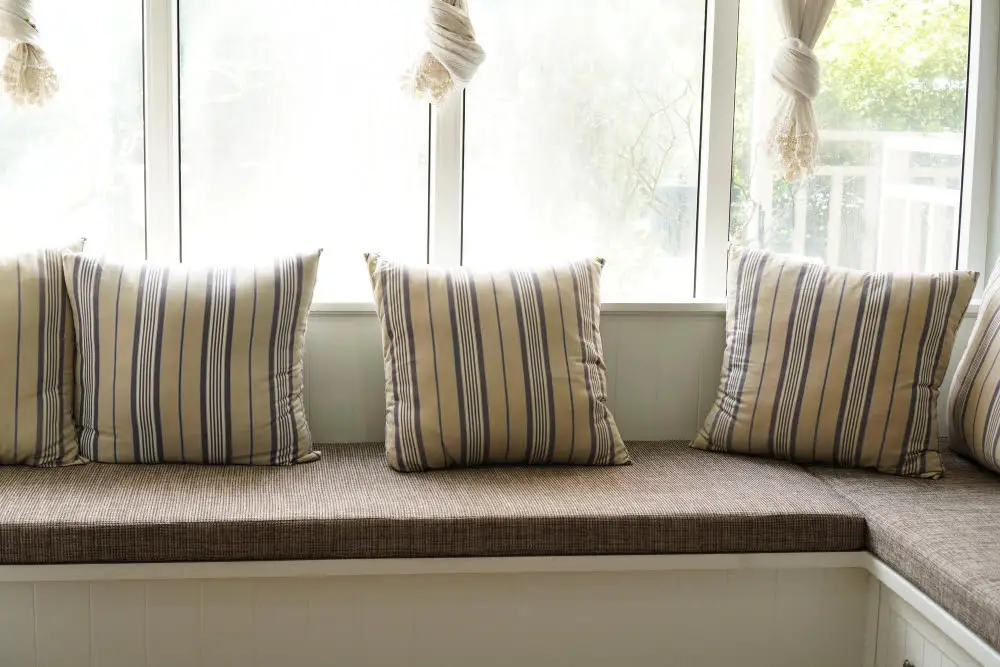
Not only does it provide extra seating, but it also offers ample storage space for blankets, pillows, and other items you want to keep out of sight. A storage bench placed in front of your window can be an excellent addition to the overall look and feel of your living room.
When choosing a storage bench for your window area, consider the size and style that will complement the rest of your decor. You may opt for a sleek modern design or go with something more traditional like an upholstered option with tufted details.
In terms of functionality, make sure to choose one with enough space inside to store all the items you need while still leaving enough legroom when seated on top. If you have kids or pets at home who might climb on top or play around it unsupervisedly – ensure safety by selecting one made from sturdy materials such as wood or metal.
A Low Bookcase

This option is perfect if you have limited space or want to create an illusion of height in the room. A low bookcase can serve as both storage and display space, allowing you to showcase your favorite books, decorative items, and plants.
When choosing a low bookcase for your living room window, make sure it’s not too tall or wide so that it doesn’t block the natural light coming through the window. You can also opt for an open-back design that allows light to pass through while still providing ample storage space.
To enhance its aesthetic appeal further, style your low bookshelf with decorative objects such as vases filled with flowers or greenery placed on top of stacks of books. You could also add some framed photos or artwork leaning against the back panel.
Plant Tables
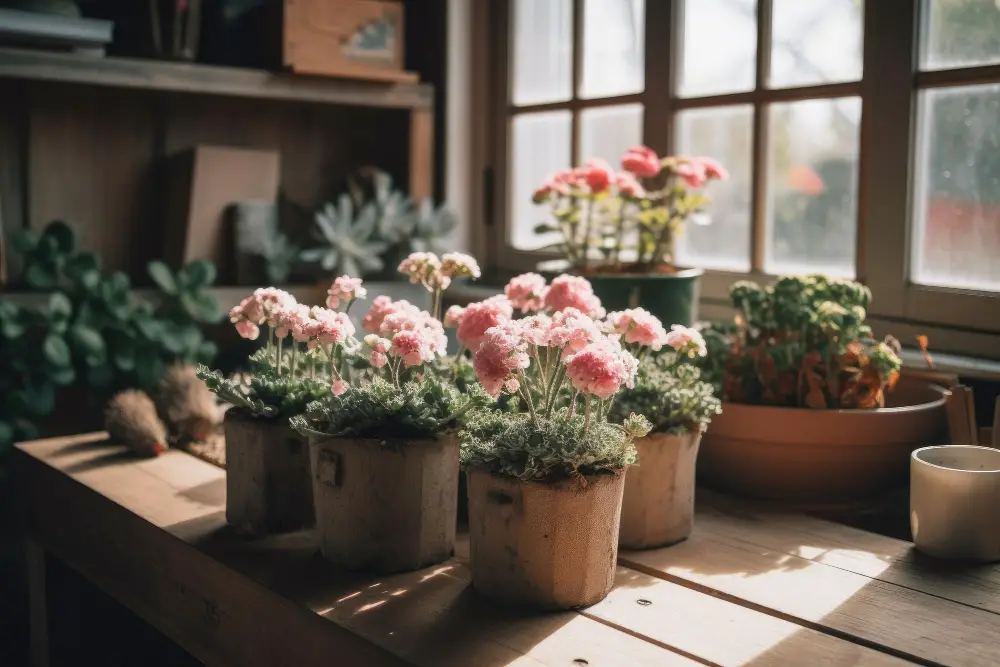
These tables are designed specifically for holding plants and can be placed directly in front of the window. Not only do they provide an excellent spot for displaying your favorite indoor plants, but they also help bring natural light into the room.
When choosing a plant table, make sure it’s sturdy enough to hold heavy pots and has enough surface area to accommodate multiple plants if desired. You can choose from various styles such as wooden or metal frames with glass or wood tops that complement any decor style.
Adding indoor plants not only adds beauty but also provides numerous health benefits like purifying air quality and reducing stress levels.
Indoor Plants for Windows
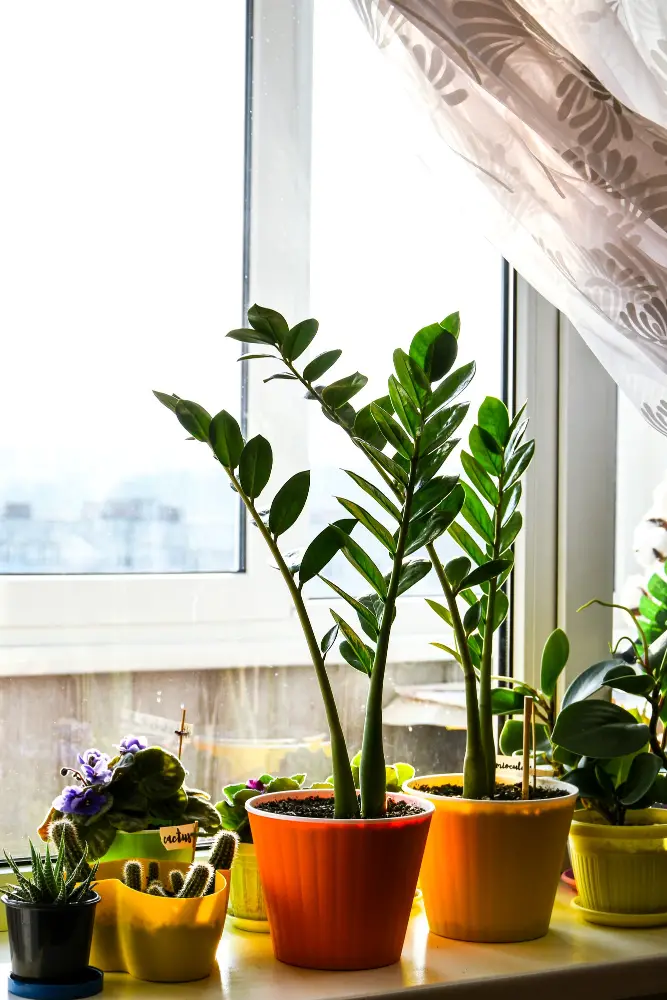
When it comes to placing indoor plants in front of windows, there are some things you need to consider. First, make sure that the plant can tolerate direct sunlight if your window receives a lot of it.
Some popular options for sunny windows include succulents, cacti, and herbs like basil or rosemary.
If your window doesn’t receive much light or is north-facing, opt for low-light tolerant plants such as snake plant (Sansevieria), ZZ Plant (Zamioculcas zamiifolia), Pothos (Epipremnum aureum) or Peace Lily (Spathiphyllum). These will thrive even in dimly lit spaces.
Another thing you should keep in mind when choosing indoor plants for windows is their size and shape. If you have limited space on your windowsill but still want greenery there then go with small potted varieties like mini ferns or ivy which can be hung from hooks above the window frame using macrame hangers.
Decorative Window Film
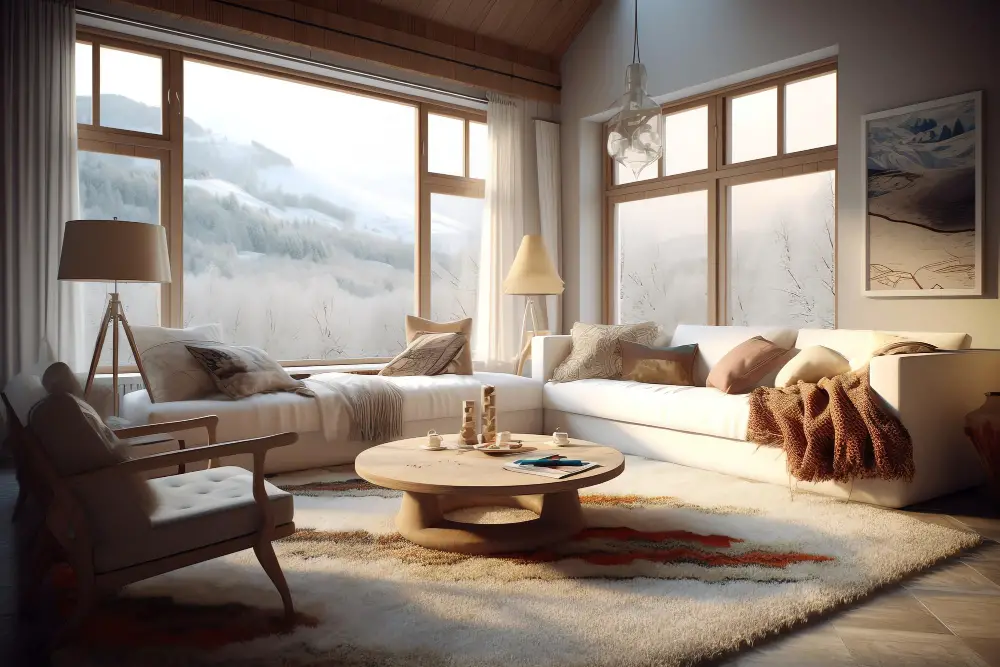
These films come in a variety of patterns, colors, and textures that can transform your plain glass into something unique and beautiful. You can choose from frosted or etched designs that mimic the look of expensive stained glass or opt for a more modern geometric pattern.
One great thing about decorative window film is its versatility. It’s easy to install, remove, and replace if you ever decide on a new design or want to switch things up seasonally.
Plus, it’s much cheaper than replacing your entire window with frosted glass.
Another benefit of using decorative window film is the added privacy it provides without sacrificing natural light flow into your space. This makes it perfect for ground-level windows facing busy streets where passersby might peek inside.
A Large Potted Plant
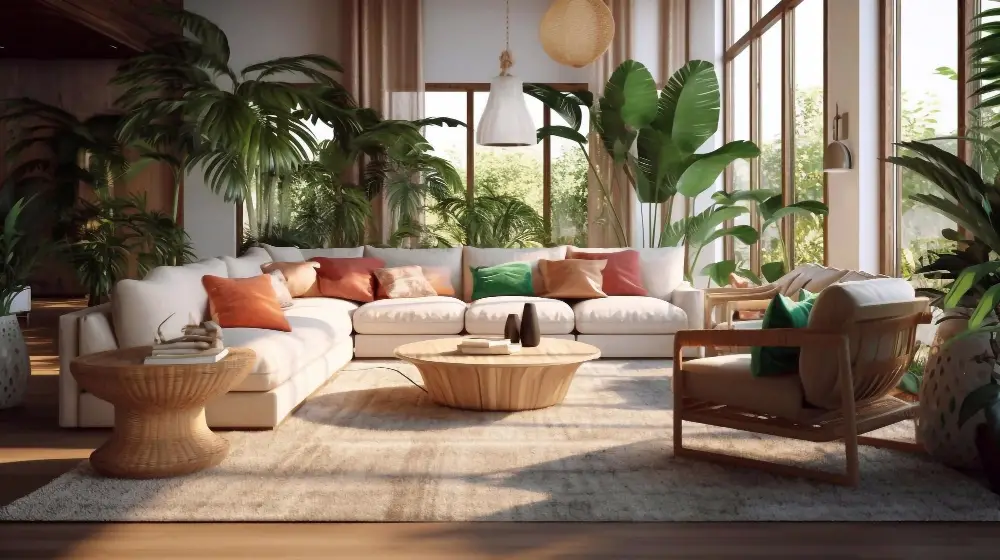
A tall and leafy plant can help fill up the empty space in front of your window, making it look more inviting and cozy. Plus, plants are known for their air-purifying properties, which means that they can improve the indoor air quality of your home.
When choosing a large potted plant for your living room window, consider the amount of natural light that comes through it. Some plants require direct sunlight to thrive while others prefer indirect or filtered light.
Make sure you choose one that fits well with the lighting conditions in your space.
Some popular options include fiddle-leaf figs, rubber trees, snake plants (also known as mother-in-law’s tongue), and bird-of-paradise plants. These types of houseplants are easy to care for and will make an eye-catching addition to any living room decor scheme.
Cozy Armchairs
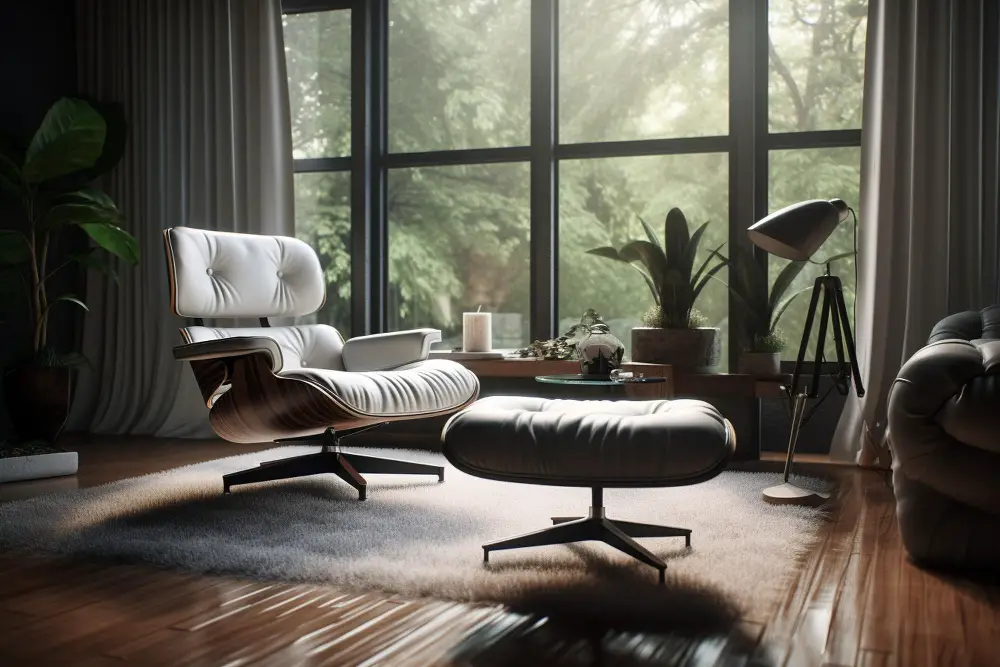
Not only will it provide you with the perfect spot to relax and enjoy the view, but it can also add an extra layer of coziness to your space.
When choosing an armchair for your living room window, make sure that it complements the overall style of your decor. You want something that looks great on its own but also blends seamlessly with other furniture pieces in the room.
Consider opting for an armchair made from soft materials such as velvet or chenille. These fabrics are not only comfortable but also add texture and depth to any space.
Don’t forget about functionality when selecting a cozy armchair.
A Console Table
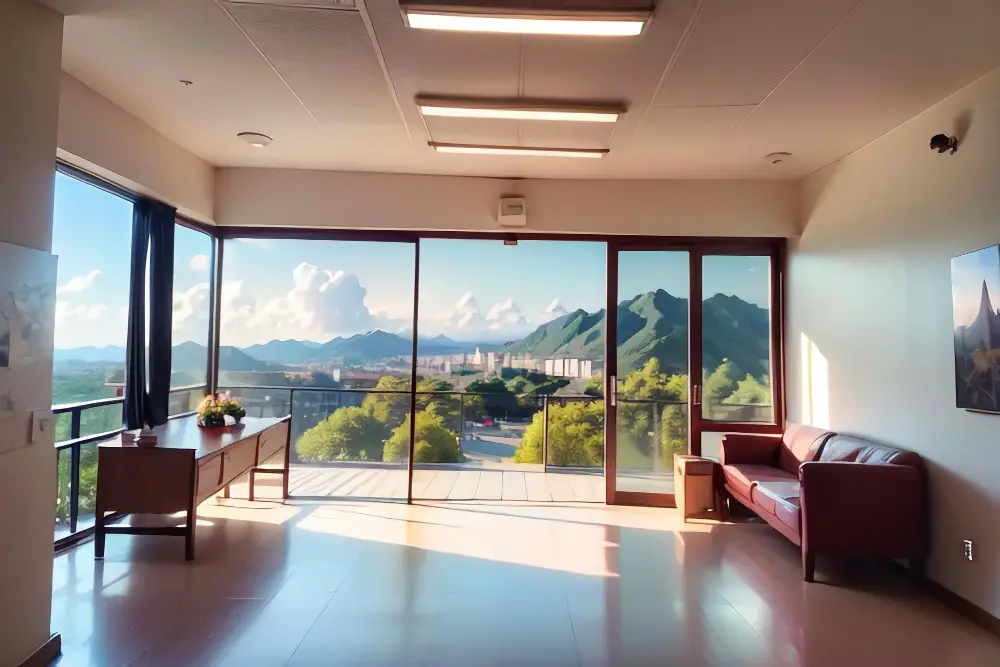
It’s perfect for creating a focal point, adding storage space, or displaying decorative items. You can place it against the wall under your window or use it as a room divider to create separate zones in an open-plan living area.
When choosing a console table for your living room window, consider its size and style. A narrow design will work best if you have limited space while larger tables are ideal if you want to make more of an impact with statement pieces like lamps or vases.
You could also choose from different materials such as wood, metal, glass depending on what suits your decor style best. If you’re looking for something modern and sleek then go with metal; however natural wood would give off more warmth making it perfect for traditional homes.
A Desk
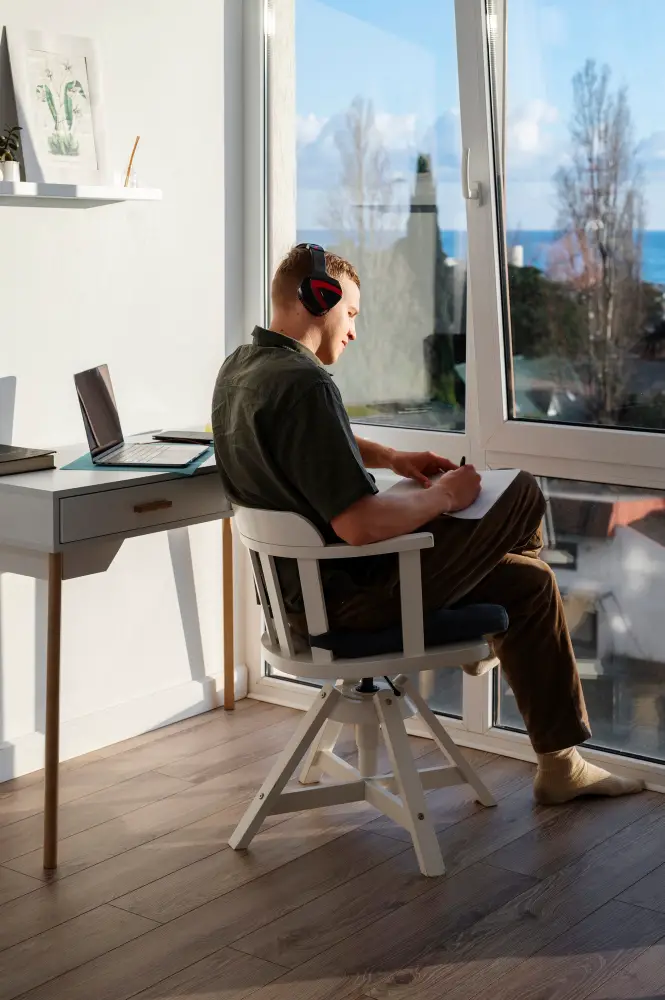
Not only will it provide you with ample natural light, but it’ll also give you the perfect view to gaze at when taking breaks. You can choose from various styles and sizes depending on your requirements and available space.
For instance, if you have limited floor space, consider opting for a wall-mounted desk that folds up when not in use. Alternatively, if storage is essential for keeping all your work essentials organized and within reach while working at the desk – go for one with built-in drawers or shelves.
Moreover, adding some greenery like small potted plants on top of the table will add life to this functional piece of furniture while creating an inviting atmosphere around it. A well-placed lamp would also help illuminate any task performed there during darker hours without blocking out too much sunlight during daylight hours.
Child Safety Measures
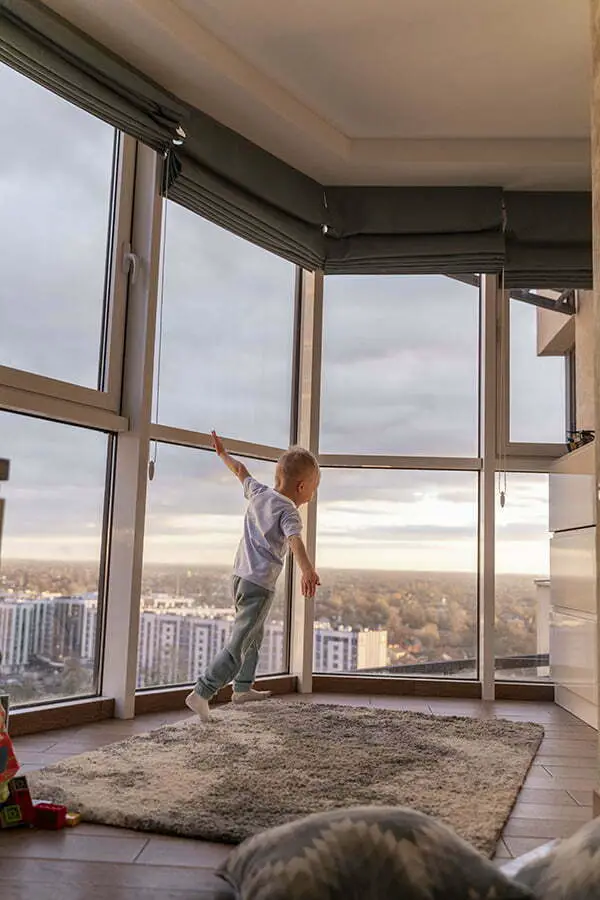
If you have young children or toddlers in the house, you need to take extra precautions when placing items in front of your window. Avoid putting anything that can be easily climbed on or knocked over by curious little hands.
Instead, opt for sturdy and stable furniture pieces that won’t tip over easily.
Consider using cordless window treatments such as roller shades or motorized blinds to eliminate any potential hazards from dangling cords. You can also install childproof locks on windows so they cannot be opened too wide.
Privacy Solutions
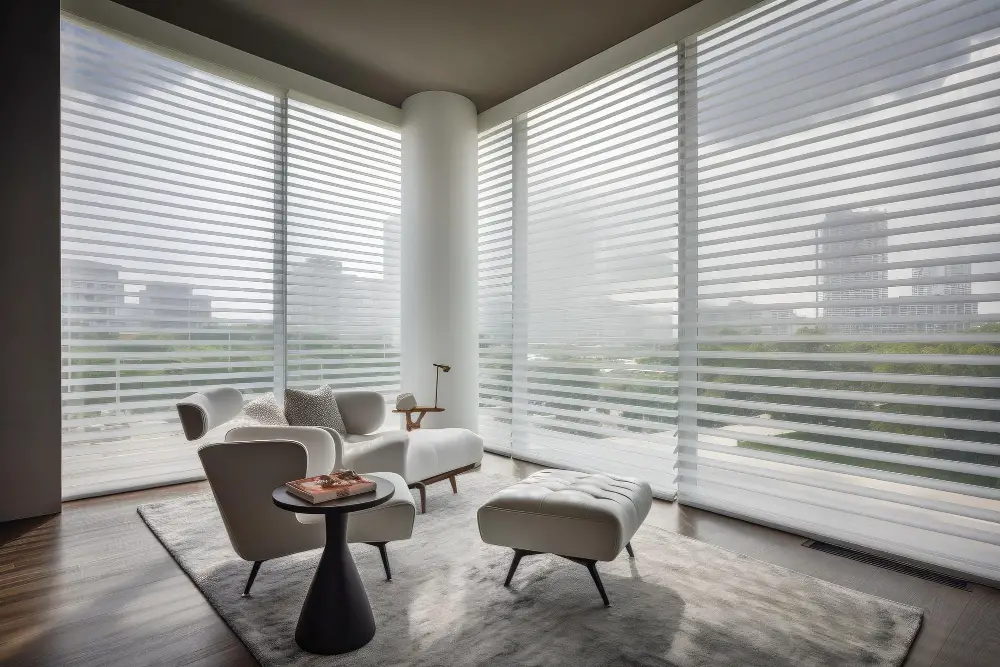
If your window faces the street or other homes, you may want to consider some privacy solutions that will allow you to enjoy the view without sacrificing your personal space. One option is installing blinds or curtains that can be closed when needed.
You could also opt for frosted glass windows or decorative window film that provides both style and privacy.
Another solution is using indoor plants strategically placed in front of the window to create a natural barrier between your home and outside world while still allowing sunlight into space. If you have an outdoor area like a balcony or patio adjacent to your living room’s windows, adding tall potted plants on those areas will provide additional coverage from prying eyes.
Natural Light Considerations
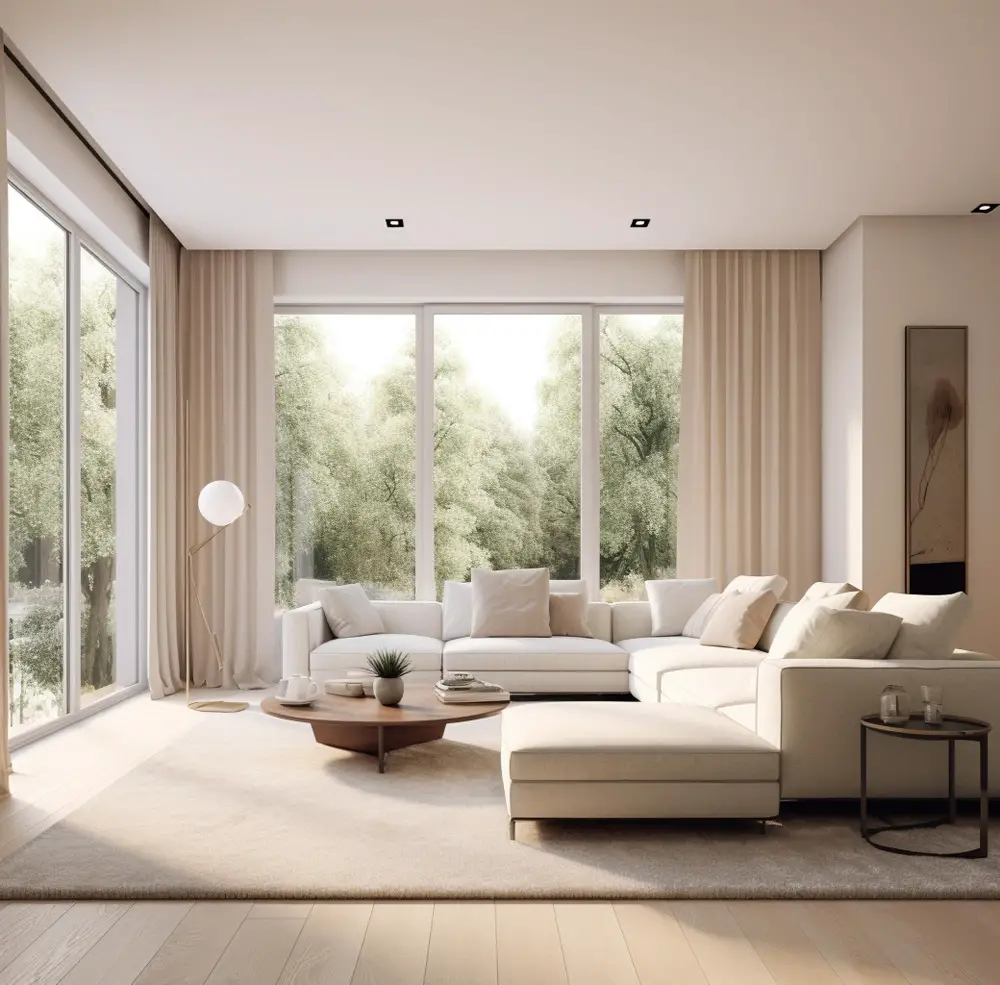
The amount of sunlight that enters your space will affect the colors, textures, and patterns you choose for your furniture and decor. If you have large windows in your living room, consider using sheer curtains or blinds to allow more natural light into the space while still maintaining privacy.
On the other hand, if too much sunlight is entering through those windows during certain times of day causing glare on screens or making it difficult to relax comfortably in certain areas of the room then installing window film may be an option worth considering as well.
Keep in mind how different seasons can impact natural lighting conditions throughout a year.
Energy Efficiency Tips
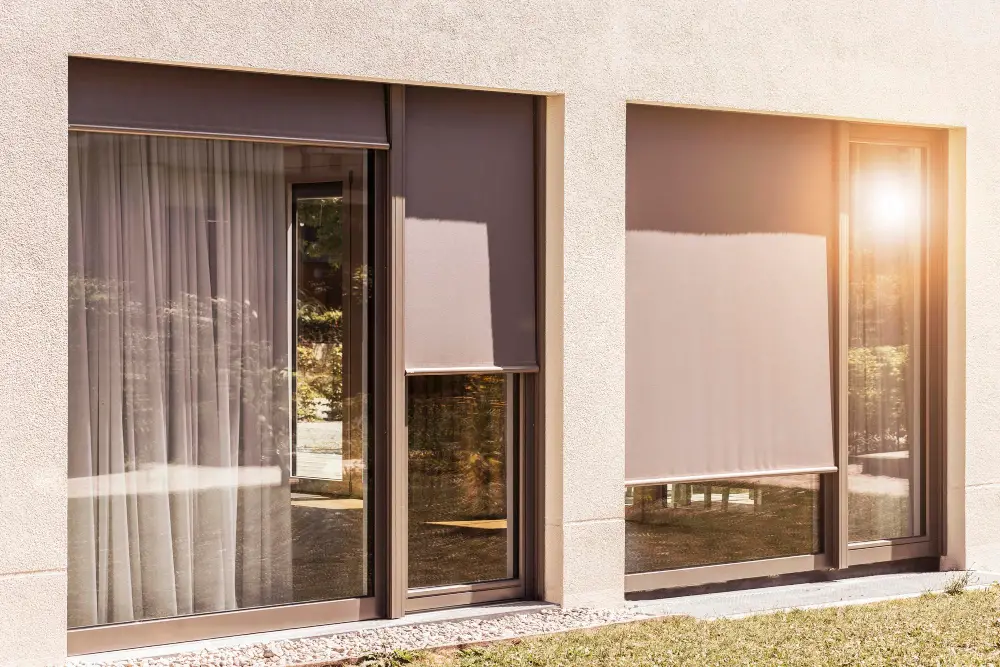
Large windows can be a significant source of heat loss in winter and heat gain in summer, leading to higher energy bills. To reduce this effect, you can install window treatments such as curtains or blinds that provide insulation against temperature changes.
Another way to improve energy efficiency is by choosing double-paned windows with low-E coatings that reflect sunlight and prevent UV rays from entering your home. This will help keep your space cooler during hot weather while reducing fading on furniture fabrics.
Sealing any gaps around the window frames with caulk or weatherstripping will prevent drafts and air leaks that could lead to increased heating costs during colder months.
Light Blocking Solutions
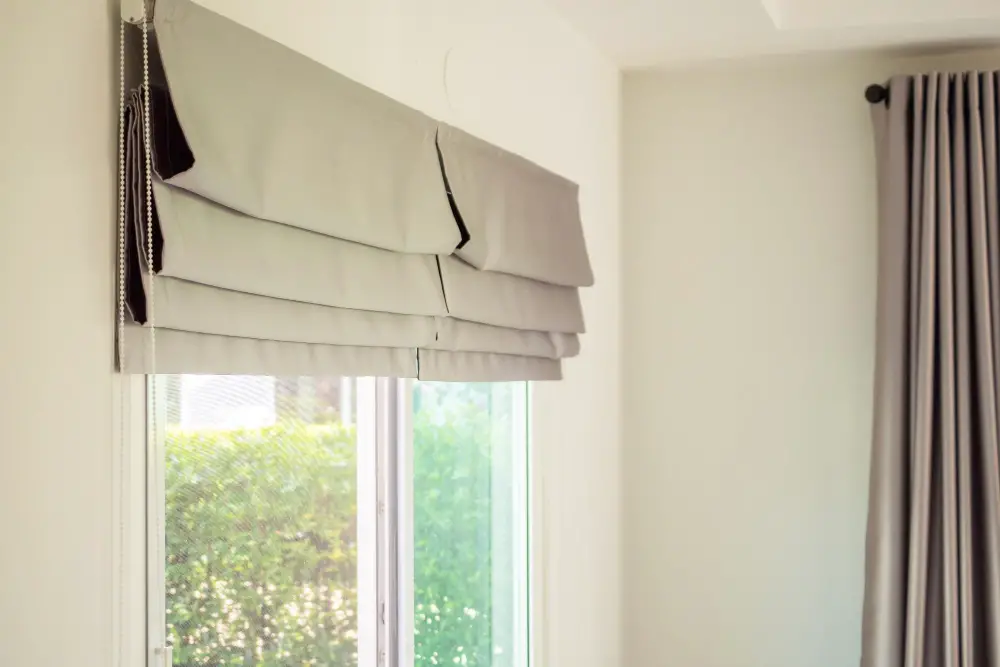
There are several options available that can help you achieve this goal without compromising on style.
One of the most popular and effective ways is by installing blackout curtains or shades. These heavy-duty fabrics come in various colors and patterns, making it easy to find one that matches your decor.
They not only block out light but also provide insulation, keeping your home cool during summers and warm during winters.
Another option is using sheer curtains with a layer of blackout fabric behind them. This way, you can enjoy natural light while still blocking out unwanted glare from outside.
If you want something more permanent than curtains or shades, consider installing shutters or blinds made from materials like wood or vinyl. These offer excellent privacy control as well as complete darkness when closed.
Seasonal Decoration Ideas
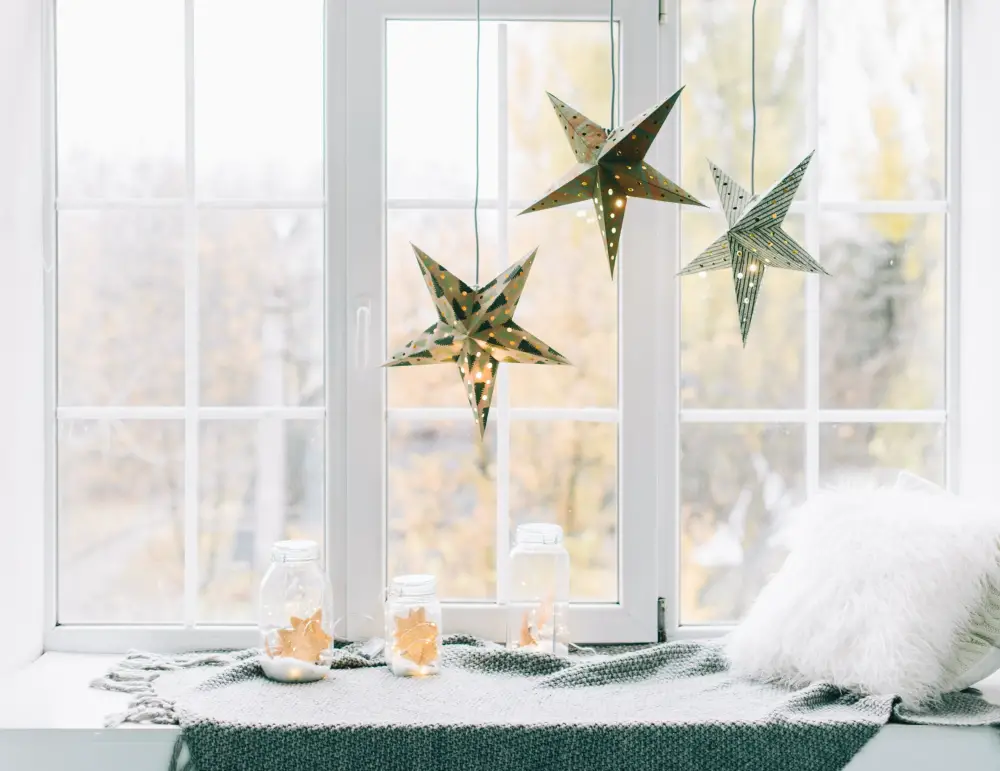
Decorating your living room window according to the season can be a fun and creative way to add some personality and charm to your space. During winter, you can hang snowflakes or icicles from your curtain rod or place a miniature Christmas tree in front of the window for an extra festive touch.
In springtime, consider adding fresh flowers in vases on plant tables or hanging colorful wreaths made of seasonal blooms on either side of the window frame.
During summer months, opt for light and airy curtains that allow natural light into your space while keeping out unwanted heat. You could also add some beachy vibes by placing seashells or starfish around potted plants near the windowsill.
In autumn when leaves start falling outside, bring them inside with leaf garlands draped across curtain rods or placed along shelves above windowsills. Whatever season it is; there are endless possibilities when it comes to decorating your living room’s windows!
FAQ
Should furniture be placed in front of windows?
Furniture, such as a sofa, should be placed at least a foot away from windows to allow for drapes movement, ease of cleaning, and enhance the room’s spaciousness.
What do you put in front of a picture window?
In front of a picture window, one can place a sofa to add coziness and create a viewing area, while using indoor plants or framed art to provide visual interest and a dash of color.
Can you put things in front of windows?
Yes, you can place furniture in front of windows without losing all your light.
How can window treatments affect the arrangement of furniture in the living room?
Window treatments can impact furniture arrangement in the living room by dictating the style, color scheme, and positioning of furniture to complement the design and functionality.
What are some creative ways to design and style the space in front of a bay window?
Some creative ways to design and style the space in front of a bay window include utilizing a window seat, incorporating a small reading nook, or adding a decorative display with plants and artwork.
How does natural light impact the choice of items placed in front of living room windows?
Natural light significantly impacts the choice of items placed in front of living room windows by requiring homeowners to consider sunlight exposure, potential glare, and color fading on their selected furnishings and decorations.
Recap
